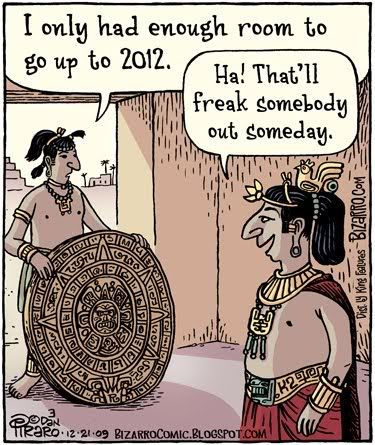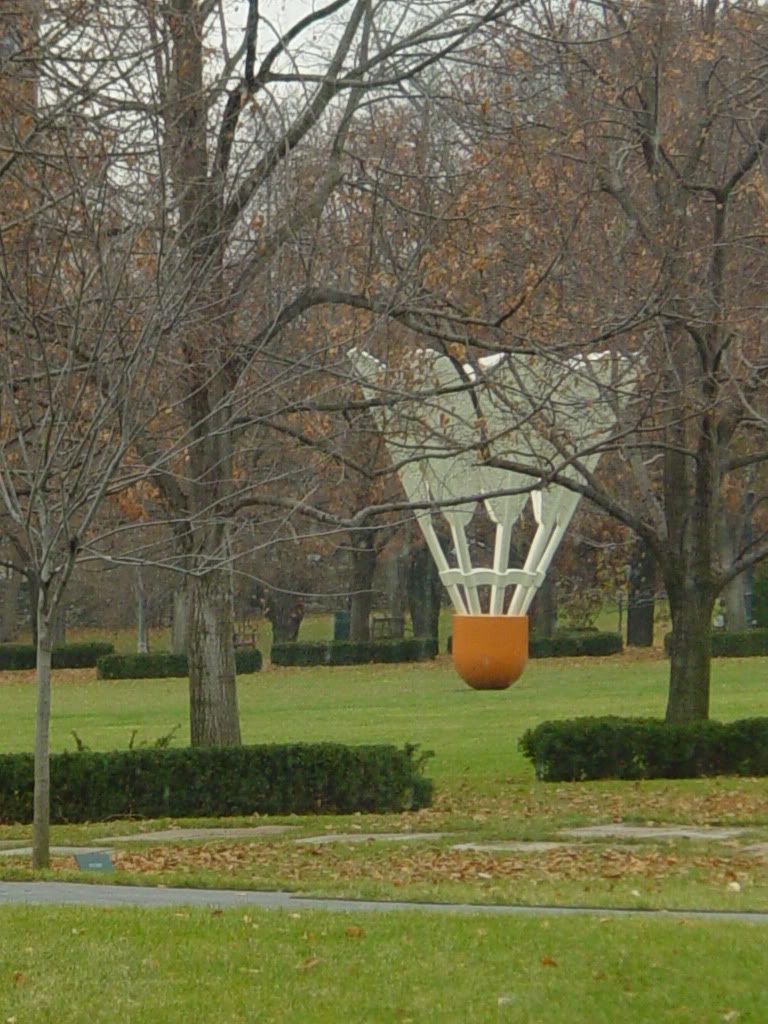The apocalyptic movie has become a staple within the film making industry. Fans of this genre flock to the theatres to experience the thrill and the more realistic the drama, the better. But, the most successful of these movies are the ones that create a fictional narrative based on historic artifacts or events, such as the very real 2012 phenomenon that prompted the creation of the movie, 2012. This film is based on the fears that arose as people discovered that the Mayan calendar, created some three thousand years ago, ended on the Winter Solstice of the year 2012. This arbitrary end to such an influential and superstitious culture’s calendar caused people all over the world to develop their own hypothesis for why the calendar ended on such a date. The consensus was that the Mayans knew something would happen on that exact date centuries later, causing the world as we know it to cease to exist.

As well, the apocalyptic comic has also become a staple within the entertainment industry. Or rather these comics are just a commentary to the apocalyptic phenomenon that arose with the turn of the twenty-first century, Y2K. The always socially and culturally conscious, comic series, Bizarro, developed by Dan Piraro has come up with its own explanation for what has become known as the ‘2012 Phenomenon’. The aesthetic and rhetorical use of logos through text and visual constraints, as well as pathos through humor help to develop the argument (or explanation) created within the December 21, 2009 Bizarro comic. This argument is that as a society we misread and negate the material constraints of a text and instead lay our own narrative over that text that undermines the importance and original purpose for that specific communication, in this case the Mayan calendar.

The first part of the panel that is noticed when viewing the Bizarro comic is the text. The hierarchal arrangement of the dialogue bubbles in the top middle of the panel attracts the viewer’s attention. This attention-grabbing technique works “because we have learned to read from top to bottom and left to right.” (Wysocki and Lynch 287) The placement of the dialogue bubbles, one over the top of the other, and the direction of the communication between the characters, from left to right, also comes into play with the techniques of visual hierarchy. Another reason that the eye is first drawn towards the dialogue is because of the simplicity of this area of the comic. The stark contrast between the black text and the cream background creates a simple, but attention-grabbing use of logos within the frame of the comic. This hierarchal and aesthetic approach to logos speaks to how we could misread a text. With the placement of the text above the visual elements, the viewer could misread the dialogue especially because it is supposed to work in conjunction with the visual images. The text could also be misread because of an anomaly in language.
There are two main ways in which the text is incongruent with the visuals and the context in which the characters are portrayed. The first way in which the text differs from the drawings is in the language. Based on the drawings, the characters in the panel are supposed to be Mayans. But, the text is written in English. This use of the English language caters to an English-speaking audience of mostly Americans. If this comic were to be accurate, historically, they characters would not be speaking English, they would be speaking in the Mayan language. This use of a predominantly American language instead of a historically accurate one aids in the creation of the argument that historic events and artifacts are misunderstood in current culture. Another anomaly created in the text is the way in which the dialogue is written. By using the phrase “freak somebody out,” a modern dialect is created within the comic and the use of contemporary slang creates a universalizing effect. This inconsistency between the historic content of the image and the vernacular used in the text also furthers the argument that misunderstandings occur when present-day society creates their own interpretation for historical artifacts and does not take into account the culture from which that piece arose.
The argument of the comic is also furthered by the visual constraints in which it was created. The use of a single panel is the main visual constraint of the comic. Whereas most comics contain three panels in which the story is told, this Bizarro comic is contained in just one. This limited area forces the commentary to be summed up in one small square. This undersized area also creates a focused effect on the argument of the comic at hand, allowing it to be more obvious to its readers. While a focus on the argument is an important part of how this comic is formed, there is a more important parallel created through the use of one panel to a specific element within the comic itself.

The Mayan calendar depicted in the frame of the comic is an important component of the visual structure. Its historically accurate and detailed depiction proves that this image is important to the overall argument created within the comic. As shown in the image at the left, this calendar was created in a circular fashion so that there was a finite amount of room available to its creator for the time in which he (or she) was incorporating. As so eloquently said by one the characters, “I only had enough room…”. Just as the comic only had one frame to tell its story, the calendar was also limited by the finite amount of room to keep time. This analogy created between the frame of the comic and the confines of the calendar aids in the argument of misunderstanding as well as the negating of material constraints. By using a single panel of a comic, a common art form of modern culture, it helps to explain how the ancient calendar could also have been constrained by its medium in a similar manner. In other words, the comic helps to “explain the unknown by the known”. (Wysocki and Lynch 306) This relationship between the various parts of the comic is not confined to the calendar and framing.

The interaction between the inaccurate narrative and argument that the comic is working to portray is what appeals to the pathos of the audience via humor. The narrative that has been laid over the Mayan calendar in popular culture for the reasons behind the end of the Mayan calendar on the Winter solstice is that this is when the Mayans thought the world would end. The humor is held in the argument within the comic, that they actually just ran out of room on their stone to continue moving through time. They way that this message is told to the audience through slang dialect by the character’s dialogue also adds to the humor. Another part of the comic that adds to the pathos used to further the argument is the portrayal of the characters. These characters are caricatures of what actual Mayans look like. This overall comedic theme throughout the panel helps to further the argument by appealing to the pathos of the audience in an everyday and humorous way that is communicated to a variety of audiences. This type of lighthearted communication is more likely to make an audience accepting of the argument that a creator is trying to form and this is especially true with the Bizarro comic.
Many comics contain an argument, whether it is underlying or in your face. Dan Piraro, creator of the Bizarro comics, has a more ‘in your face’ style than other comic artists. In the December 21, 2009 comic, this argument is as evident as ever. The argument of this particular comic is that as a society, we tend to misread and negate the material constraints of a text and instead lay our own narrative over it that undermines the text’s original purpose and importance. This argument is created through the utilization of the aesthetic and rhetorical techniques through the use of text, visual constraints, and pathos through humor. Now it has been suggested that as a society, we tend to overlay our own assumptions on the unknown in history. Not only do comics comment on this misunderstanding, but other parts of the entertainment industry as well, in books and movies. One of the most well known historical misunderstandings that has been popularized by the entertainment industry is the DaVinci Code novels and movie series. What else in the course of history has been misread and where else in the entertainment industry has this been displayed?
Works Cited:
Piraro, Dan. Countdown to Catastrophe. 21 Dec. 2009. BizarroBlog. blogger.com, 30 Dec. 2009. Web. 28 Mar. 2010.
Wysocki, Anne Frances, and Dennis A. Lynch. Compose, Design, Advocate. N.p.: Pearson Education Inc., 2007. Print.




